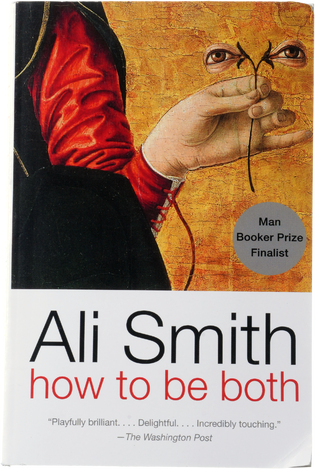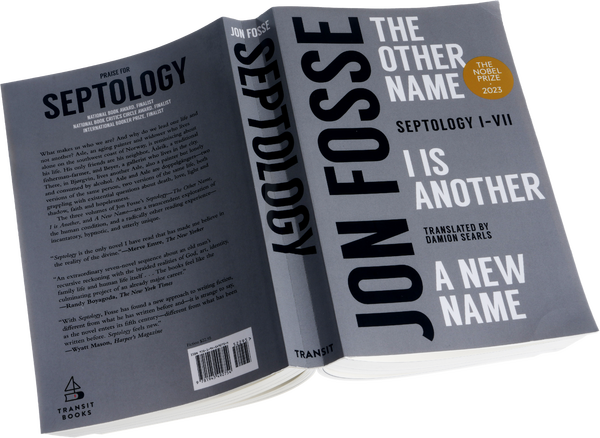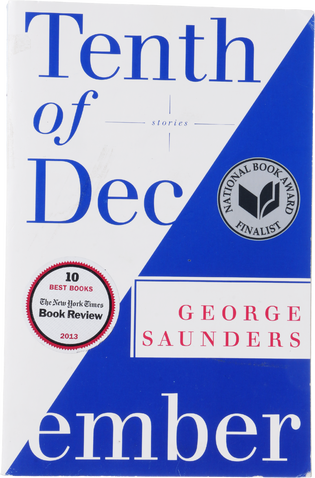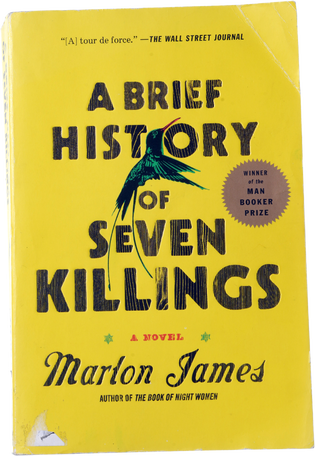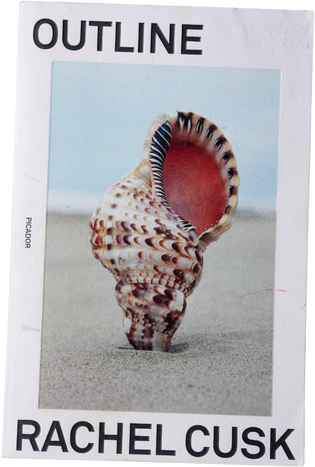If you’re an avid reader, you’ve likely encountered The 100 Best Books of the 21st Century, a list curated by the New York Times Book Review from the votes of 503 writers, critics, and other book lovers. If, like me, you’re limited to only a handful of free articles from the Times per month, you owe it to yourself to click on the link I’ve provided above. Among the features of the on-line version of the article is the ability to check off the titles you’ve read, which generates an image similar to that which kicks off this post: a customized visualization of the specific titles you’ve read. Area libraries have begun displaying a hard copy of the checklist, complete with a link to a survey to generate more reading recommendations for you.
Of particular interest to me is how many of these titles challenge the normal boundaries of narrative fiction. When I took my library’s survey, I let them know that my favorite type of novel falls into a category variously called experimental, postmodern. encyclopedic, or just plain difficult. It’s my contention that even readers who shy away from “difficult” literary fiction will find a title or two among the challenging reads on the New York Times list that will appeal to them mightily.
I’ve looked at the 39 books from the list I’ve read and picked out the ones that do something a little different than your traditional plot-and-character driven chronologically-organized novel. I’ll let you know what they do differently, both in my own words and quoting briefly from the Times, and how well they succeeded for me. I’ll also provide a link to a sample from the text, since I would argue that the best way for you to know if the book is for you is to read a page or two. If you’re loving the sentence-by-sentence feel of the sample, you’re likely to enjoy the whole book, as long as you set aside your expectations of what a novel does.
#99: Description: “…elegant double-helix of a novel”
A summary of an Ali Smith novel reads like a traditional fiction, but to read her feels more like a combination of sense impressions and observations about art, politics, time, and a wide array of other Big Ideas. The “double-helix” comment makes reference to two intertwined plots often (as in this case) separated by centuries of time. That trope has become much more common in recent years, but still feels experimental in Smith’s hands. Other challenges with this particular book include no quotation marks and unattributed dialogue. Other Smith novels are less demanding than this one, but I’d say you can’t go wrong with any Ali Smith title.
#88: Description: “short (nay, microdose) fiction”
No preview available
Lydia Davis’s writing falls into a category that’become more common in recent years, but may be something you haven’t experienced: the short, short story. It’s impossible in a page or so to have a story engage in any traditional strategies related to plot and character development. Davis is after something different here. The good thing for you as a potential reader is that you can get a taste of Lydia Davis by reading a few of her stories in an incredibly short time. I tend to favor voluminous novels, so Davis isn’t in my wheelhouse, but the stories do get you thinking. It’s one of the closest thing to poetry on the Times list.
#78: Description: “…a single stream-of-consciousness sentence with few paragraph breaks and two central characters with the same name…”
Fosse is the 2023 Nobel Prize winner for Literature. He came highly recommended by fellow Norwegian novelist and a personal favorite of mine, Karl Ove Knausgaard. Like Knausgaard, Fosse spends a loving amount of time writing about the mundane details of life; unlike Knausgaard, Fosse’s narrative strategies fall into the category of the experimental, although by 2024, there are a sufficient number of long-paragraph, stream of consciousness novels out there that Fosse hardly feels experimental. Each of the seven books of Septology covers a single day. I’m through the first two and am thoroughly enchanted.
#62: Description: “…unnamed narrator…who bears a remarkable resemblance to the man pictured on its biography page…this metaphysical turducken of a novel…”
Lerner is a poet, and all of his books feature the sort of close observation of life that poets excel at. 10:04 is an example of still another narrative type that is becoming common enough to be not so experimental any more: the loosely autobiographical, lightly fictionalized memoir/novel. Lerner’s also includes photographs, which underline the sense of reality this novel conveys. I’ve read three of his books and am hoping that he tries his hand at writing at much greater length.
#54: Description: “…linguistic invention and anarchic glee…”
Readers of speculative/science fiction might see enough of the elements of traditional genre fiction in George Saunders to wonder what he’s doing on my list. But I find his stories here to be deeply unsettling, deeply satisfying, and deeply literary to a degree unsurpassed in the sci-fi canon. Maybe every great author, even of traditional fiction, is unique, but Saunders is out-of-this-world one-of-a-kind.
#50: Description: “How many ways can you tell the same story? Which one is true?”
Each section of Trust is traditional in feel, but when you read the entire book and see the same events from the perspective of different characters and told in different ways, you see why I’ve placed it on this list. Like virtually every book here, Trust can be reread with even greater appreciation. Once you’ve experienced all the puzzle pieces, you see the earlier pieces in a different light.
#42: Description": “‘Brief?’ For a work spanning nearly 700 pages, that word is, at best, a winky misdirection. To skip even a paragraph, though, would be to forego the vertiginous pleasures of James’…novel…”
When you read Marlon James, you’re never quite sure where you are and what’s happening, and the challenges become even greater when he throws Jamaican slang/dialect into the mix. But read carefully, and you’ll find your place, differentiating the various characters and subplots surrounding the death of Bob Marley. This may be a case where reading a page or two of the preview might discourage you, but continue on, and like for me, this may become an all-time favorite.
#39: Description: “…13 linked stories jump from past to present to future…”
Here’s another title which probably shouldn’t be on this “experimental” list. Egan’s novel was wildly popular, and for good reason. Still, it’s worth calling attention to the challenges of reading a novel of interlinked stories, and thinking about the deeper connections that go beyond the characters that appear in multiple stories.
#34: Description: “a mix of free verse, essayistic prose poems and visual art…”
Rankine’s book, like some others on this list, has a visual component. It’s the closest item in the Times 100 to poetry, even though as you page through it, you won’t see much traditional poetry. One element that so many of the books I highlight share is their amalgamation of elements. Rankine didn’t sweep me away like so much of the poetry I love, but if I change my expectations and let her assemblage work on me, I suspect a second reading will bring greater appreciation.
#28: Description: “…comically ambitious…wild and woolly condensation of ideas, styles and far-flung milieus…six nesting narratives…a postmodern puzzle box…”
The complexity of Cloud Atlas goes beyond even what I have suggested with the description above. All of Mitchell’s novels come together to tell one humongous story, with shared characters and with certain events taking on a different light when addressed again in a later novel. Yet, you don’t need to read all of Mitchell to appreciate Cloud Atlas. This is a particular favorite of mine, and the movie version is pretty cool too.
#18: Description: “…images collide and coalesce…a polyphony of voices and stories…”
One might have guessed that when George Saunders finally turned his hand to a novel, the result would be unlike anything you’ve ever read. Lincoln in the Bardo has the look of a playscript, but no play I know is so overwhelming in the size of its cast list. The audiobook features 166 readers, and probably should be listened to following along in the physical book.
#14: Description: “…philosophical, unsettling, and semi-autobiographical…”
Interestingly enough, the closer to the top spot the title, the less of a personal favorite of mine it is. Rachel Cusk’s books seem like they should be right up my alley. Outline tells its story, such as it is, through a series of conversations, but neither the characters nor their conversations captured my interest. You should try the sample anyway; if the narrative voice captures you, you’re likely to enjoy the whole book more than I did.
#8: Description: “discursive, dreamlike recollections…”
I read Austerlitz many years ago now, and recall very little of it beyond the photographs, which convey mood rather than illustrate the narrative. Books I love don’t slip away from me with the passing of time, but Austerlitz has. Once again, your mileage may vary.
#6: Description: “feverish, vertiginous…over the course of 900 pages…to call into being an entire world governed…by boredom…and horror…five loosely conjoined sections…”
When a book is this long, the narrative voice better be compelling. I can read 1300 pages of David Foster Wallace and enjoy every often convoluted sentence, but I found 2666 to be a slog. The heart of the book is an extended section detailing the discovery of the bodies of women murdered in Mexico. Powerful, yes, but the writing is almost reportorial rather than literary. The point may be to feel overwhelmed with detail, but I fought hard to not run out of gas before the end.





